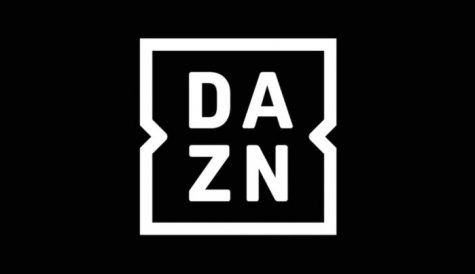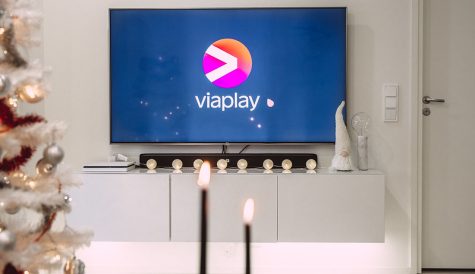
After more than 40 years of operation, DTVE is closing its doors and our website will no longer be updated daily. Thank you for all of your support.
Content security
With the number of actual and potential video distribution channels proliferating, flexible but effective content security solutions are becoming more important than ever.
Content security remains a crucial piece in the IPTV technology puzzle. With the advent of complex IP-based distribution over multiple networks and to multiple devices, demands placed on content security technology are greater than ever.
For Jonathan Beavon, director of segment marketing at NDS (IBC 1.A71), operators are looking for ways of distributing content around the home, requiring a mix of conditional access and DRM technologies. “Service providers are looking for whole home solutions that combine a range of on-demand and linear TV services to many devices in the home,” says Beavon. “This requires both robust and flexible DRM and content protection on client devices and back-end rights management to provide the business scenarios support.” He says that NDS is also seeing demand for hybrid DVB/IP products. The company has already developed hybrid solutions from Get in Norway and Viasat in Sweden. At IBC, NDS will show a hybrid box with live broadcast from a DVB stream and advanced VOD capabilities from IP.
 Beavon says that there is growing interest in home-networking. “There is strong demand for multi-room. Home networking goes hand-in-hand with multi-devices support, as users want to share content between devices. There is also interest in gateway products. Ultimately, NDS anticipates convergence across all platforms,” he says. NDS recently showed proof-of concept multi-room DVR functionality that lets subscribers transfer DVR content over a home network and view it on another set-top in the home. “Functionality is primarily focused on TV programmes but can include photos and music transfer from other devices. With a multi-room DVR service, subscribers have one DVR networked to multiple set-tops,” says Beavon.
Beavon says that there is growing interest in home-networking. “There is strong demand for multi-room. Home networking goes hand-in-hand with multi-devices support, as users want to share content between devices. There is also interest in gateway products. Ultimately, NDS anticipates convergence across all platforms,” he says. NDS recently showed proof-of concept multi-room DVR functionality that lets subscribers transfer DVR content over a home network and view it on another set-top in the home. “Functionality is primarily focused on TV programmes but can include photos and music transfer from other devices. With a multi-room DVR service, subscribers have one DVR networked to multiple set-tops,” says Beavon.
Rival Viaccess’s (IBC 1.A51) CEO François Moreau de St Martin believes that up to now telcos have had to focus on addressing technical shortcomings and have yet to move towards differentiating their services. “Really you have to come up with differentiating services because television is nothing new – it’s been around for 50 years or more, so you really have to bring something new,” he says. “IPTV allows you to bring a lot of new things and maybe we’ll talk about that later, but right now it’s the beginning, the launching of services and it’s a little bit ‘me too’ and you have to persuade customers why they have to switch to IPTV. That’s the challenge.”
Moreau de St Martin believes that this year will see continued investment in applications, with significant upgrades to user interaces using technologies including SPG, Flash and 3D graphics. Content discovery and the beginnings of integration between web and TV-based content are also key trends for the future, he believes. He points to Viaccess’s acquisition of middleware provider Orca Interactive as a way of simplifying the management of both the subscriber experience and content security for the operator. The other key selling point for Viaccess, he says, is its expertise across the ‘three screens’ of TV, PC and mobile device. “People want to consume content on any device anywhere, whether they are connected or not. All the players are following the trend of convergence,” he says. At IBC, Viaccess will demonstrate a ‘security command centre’, automated and personalised pre-push VOD over IP for hybrid platforms using its Compass product, push VOD for broadcasters, convergent rights management, 3D video and animation, Common Interface Plus and live TV delivered over a peer-to-peer network on a PC.
Hybrid systems
Hybrid systems are a target market for conditional access supplier Irdeto (IBC 1.D51). In addition to using broadcast TV signals to ease the load on an IPTV service provider, this could also mean using the internet to supplement broadcast TV offerings by allowing viewers to access internet video content. “There are a number of studies that indicate that people prefer to watch long form content on a television. As a result of this, many companies who have internet-to-PC offerings are either considering or already offering a device that connects from the internet to a television,” says Jan Steenkamp, head of sales and business development, America at Irdeto. “The result of this is a second box or converter device in the home which causes clutter and is difficult to navigate and connect for the consumer. The hybrid box solves this by providing one box and one navigation scheme, making it simple for consumers to get internet content.” Multi-room, multi-device and networked home solutions for the mass market are, however, still some time off, Steenkamp believes. “It is still early days for this and in my opinion still a couple of years away,” he says. “What Irdeto is currently doing to prepare is building our platform and core technologies to accommodate this in the future.”
“Service providers need security systems that allow a rapid and secure hack recovery at low cost.”
Alex Borland, Latens
Another major player, Nagravision (IBC 1.D69), agrees that differentiation and the use of hybrid will become more important as competition intensifies. “In an increasingly competitive market IPTV service providers need to differentiate their offers. As such their priorities are to offer incremental value added services as well as controlling the end user experience,” says Ivan Verbesselt, senior vice-president, marketing. “Nagravision is seeing a growing interest for on-demand services and customisation of the end user experience. There is also a growing demand for combinations of IPTV and broadcast services in hybrid environments. This almost universal need for hybrid solutions is a trend that Nagravision identified from the very start which has resulted in some of the Lighthouse hybrid deployments which is now clearly reflected in our ability to offer hybrid broadcast/broadband solutions with broadcast scaleability.” In terms of its own R&D priorities, this has resulted in an emphasis not only on security but on video-on-demand technology via the Nagra Media Service Delivery Platform and on the user experience via the Nagra Media Guide. Nagravision is developing Widget functionality for the latter, in order to blend the web and TV experience. Content providers are also looking to distribute content to multiple devices. “Nagravision is seeing an increased interest from service providers in home networking as end users are breaking down the barriers of their living environment. Some standards are now defined to ease the interworking of different devices including CPCM, DECE and DLNA, and Nagravision is working intensively to provide ways to protect content that can be shared between devices,” says Verbesselt. “The reality is that the standards ecosystems have yet to crystallise to achieve a real level playing field needed for the CE and TV industries to really work hand-in-glove.” He says Nagra Media PRM (Persistent Rights Management) offers the flexibility of delivering and managing them within the home “thus making operators relatively immune to evolving in-home standards frameworks.”
At IBC, Nagravision will showcase a range of recently deployed customer solutions. “At the one end, a key success factor is a federal service head-end that provides a central control mechanism across different delivery networks and consumption devices and increases the level of flexibility towards future business models. At the other end, a comprehensive suite of rich applications ensures an intuitive and consistent High-Definition user experience across client devices,” says Verbesselt. Nagravision will demonstrate the work it has done for operators including Mostelekom, which provides services over both cable and FTTH networks, INS (a wholesale platform for smaller operators) and Numericable, which deploys a VOD ‘shopping mall’ to distribute multiple VOD catalogues on a centralised platform.
The hybrid model will also be key to conditional access provider Conax’s (IBC 1.A31) activities at IBC. “Conax will focus on IPTV as part of our hybrid solution and an important addition to the pay-TV operators’ offering,” says Geir Bjørndal, executive vice-president, sales and marketing, Conax. “There is a growing demand in mature markets [for hybrid] as many operators view the combination of DVB broadcast and on-demand services over IP as a cost efficient and sexy solution.” Longer term, Conax plans to develop a fully integrated security platform developed specifically for multi-client platforms, where both hardware and software security is employed. Conax is also working on home-networking solutions, but Bjørndal believes little will happen in the short term. “There is a demand from subscribers to provide these services,” he says. “However, operators are struggling with existing business models to make these services profitable. Conax is currently working on a solution where we define a strong security level and mechanisms for ‘Tivo to go’-like concepts.” Conax is also exploring watermakring as well as CA-to-DRM bridging.
Steven Oetegenn, chief sales and marketing officer at software-based provider Verimatrix (IBC 5.B45), also believes hybrid will be a key area. “We believe IPTV operators will invest in more bandwidth-efficient broadcast channels to their IPTV networks, especially as HD is becoming the standard. Plus, a combination of regulations and rights restrictions in some countries prevent parallel delivery of some popular broadcast content over IP networks. The combination of terrestrial free-to-air delivery with IP for on-demand content through a hybrid receiver is proving popular, as we see with Darty in France and BT Vision in the UK,” he says.
New formats
Operators, says Oetegenn, are also likely to explore new delivery formats including rate-adaptive and progressive download formats to overcome bandwidth limitations, and new user interfaces that incorporate content discovery functionality. Finally, he says, content providers will take more serious action against piracy, leading to interest in technologies including watermarking. “Forensic watermarking is an essential layer of content security that provides both extra security and flexibility for various usage rights models, which is why we’ve made it a standard feature with our VCAS solutions,” he says.
Verimatrix itself is focusing its attention on solutions to enable the delivery of content in any format over any network, including the open internet and mobile networks, MultiRights for delivering content to third-party and native DRM clients and players, “layered security” to accommodate a range of licensing obligations across different business models, and integration with billing systems, presentation engines, encoders and VOD systems. At IBC, the company will make a a series of announcements on its next generation VCAS 3.0 system.
Another software-based CA supplier, Latens (IBC 4.B56), is focusing on IPTV for cable operators via its Cable Gateway, facilitating over-the-top TV delivery as a differentiator for IPTV, and whole-home DVR systems. Alex Borland, sales director at Latens, says that operators are increasingly looking for cost-efficient conditional access and integration between content security and middleware. “They are looking for systems that are secure and easily upgradable as piracy increases. Service providers need security systems that allow a rapid and secure hack recovery at low cost,” he says. “They also need systems that are flexible, scalable and offer pre-integrated solutions, such as Latens ECO – too many operators have suffered from the pain of integration between some CAS and middleware.” Operators also want to be prepared for managed home networking and the distribution of video to multiple devices. “There is great interest in this area as operators try to offer their customers unique advantages over the incumbent operators. Set-top manufacturers are also seeking to ensure that their boxes are DLNA compliant,” says Borland. At the last IBC, Latens launched its own home networking solution, with ECO middleware and conditional access working across a variety of devices.
At IBC this year, Latens will launch ECO for the Cable Gateway. “Latens Cable Gateway allows cable operators to securely offer the same advanced interactive features as IPTV by making the home a truly IP environment – hence protecting their content and enabling them to generate new revenue,” says Borland. “By delivering ECO in the same way, cable operators can offer enhanced TV services such as iTV, PPV, time shift TV, and games over cable distributed via IP within the home. Latens Cable Gateway allows for secure redistribution of content through an in home IP environment.”
With distribution channels proliferating, other technologies are gaining traction, including watermarking. At IBC Civolution (IBC 5.B18) will show its VTrack watermarking product. Whenever pay-TV content is accessed or distributed, VTrack imperceptibly embeds identifying data into the video stream in real-time. “For pay-TV providers and hotel chains there is an opportunity for offering HD content in an early release window,” says Wim Bus, senior vice-president, product management and operations. “On the other hand, for the content creators HD screens are a piracy risk due to improved (camcorder) coping capabilities. Also, earlier release windows mean potential earlier leakage. VTrack can address such challenge offering a traceable answer and establish confidence with content owners.” Civolution is currently working to add watermarking to compressed video, which will allow support for in-home distribution networks. “We do see requests to share content and use the set-top as a residential gateway,” says Bus.


